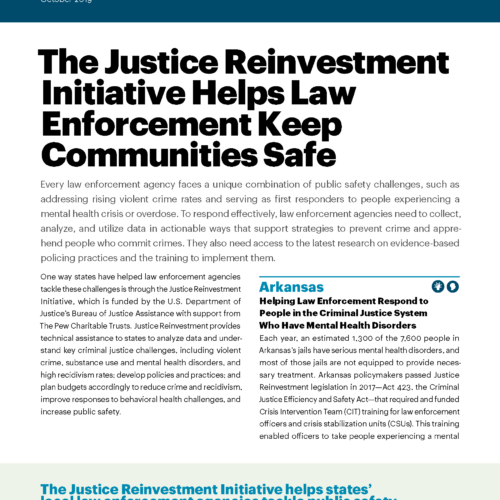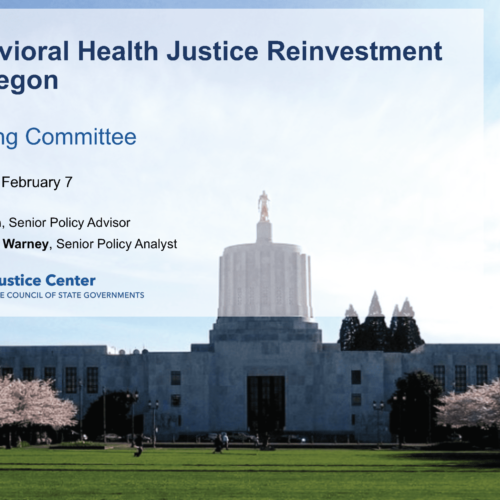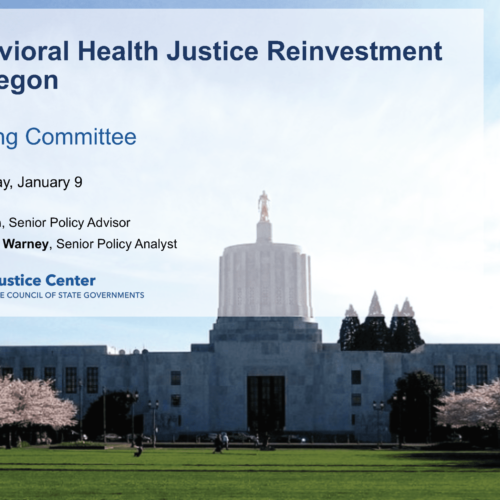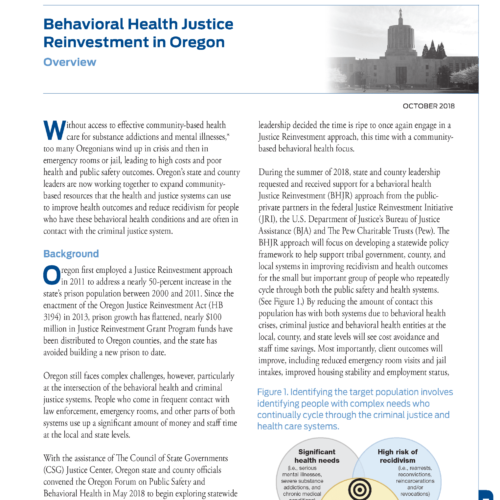Justice Reinvestment in Oregon
The Problem
In 2018, Oregon was facing significant challenges to its behavioral health system that impacted the state’s criminal justice system. The state had one of the highest rates in the nation of people with mental illnesses and substance addictions, and the death rates from drug overdoses and suicides were growing. The Oregon State Hospital was unable to keep up with referrals. At the same time, a few thousand people with mental illnesses and substance addictions were frequently cycling through Oregon county jails, courts, and emergency departments, resulting in millions of dollars in local and state expenditures, often with little benefit for either the people suffering from these conditions or their communities.
How JRI Helped
In the summer of 2018, Oregon state and county leaders requested and received support from the U.S. Department of Justice’s Bureau of Justice Assistance and The Pew Charitable Trusts to employ a data-driven behavioral health Justice Reinvestment (BHJR) approach to address the challenges related to people who are high utilizers of public safety and behavioral health resources. The CSG Justice Center provided intensive technical assistance under the direction of Oregon’s BHJR Steering Committee.
Through this process, the BHJR Steering Committee recommended that a grant program be designed to support counties and Tribal Nations in developing stronger community-based continuums of care to improve health and criminal justice outcomes and to reduce financial and public safety impacts for people cycling in and out of Oregon’s jails and hospitals. This grant program—Improving People’s Access to Community-Based Treatment, Supports, and Services (IMPACTS)—is reflected in SB 973, which was signed into law in July 2019. By more effectively serving people who are high utilizers, resources can be reallocated for law enforcement officials to focus on violent crime reduction strategies and for jail administrators to prioritize capacity for people who pose the greatest risk to the public, all while reducing the use of expensive health care resources.





















